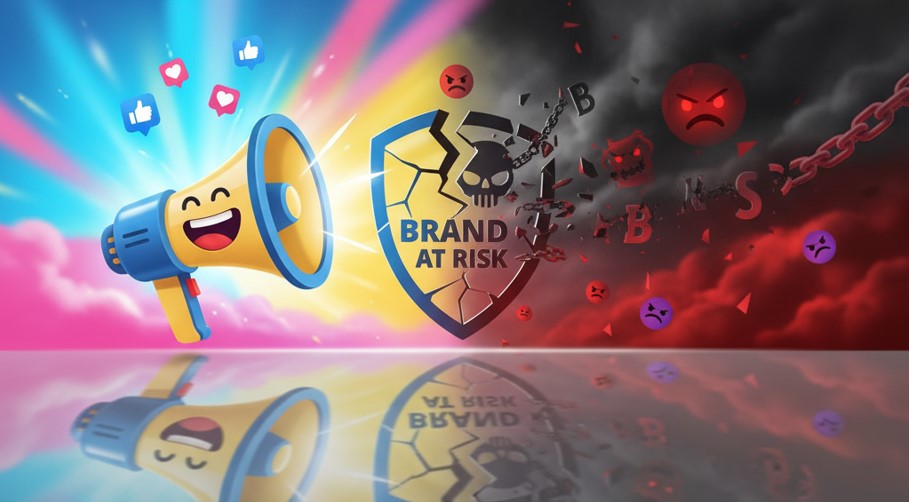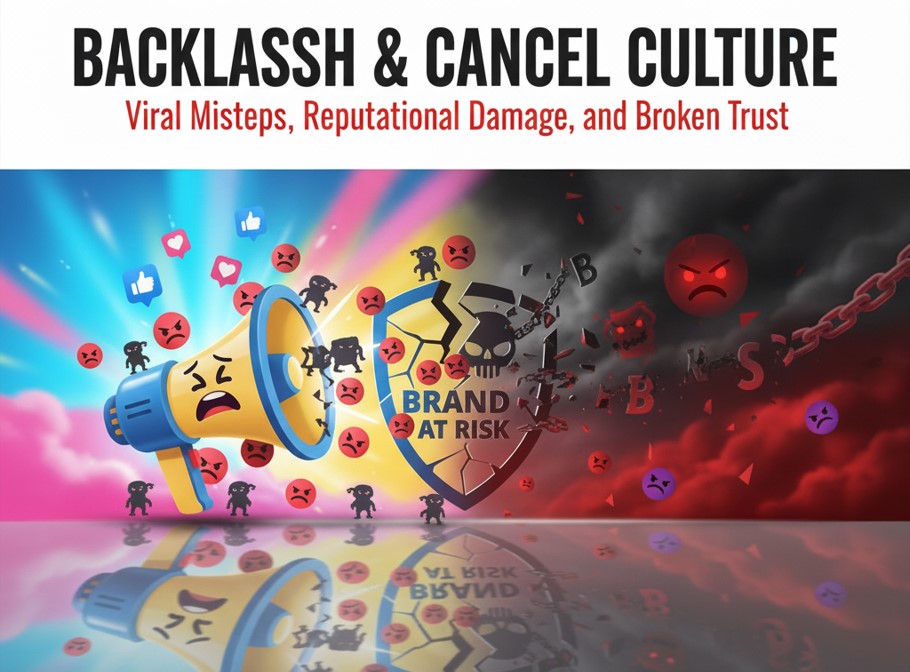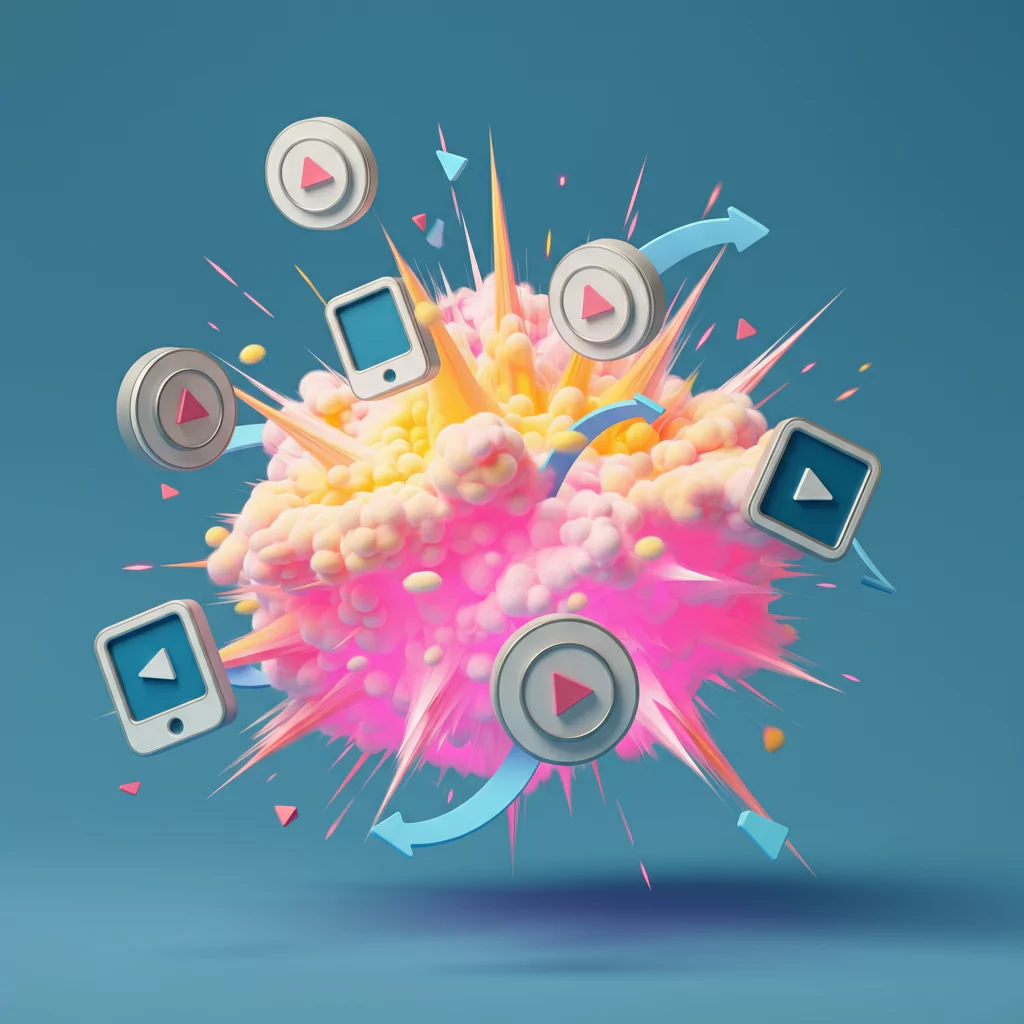
In the age of social media and short attention spans, viral marketing has become the holy grail for brands. A single campaign—funny, controversial, or heartwarming—can gain millions of impressions, explode your brand’s visibility, and rake in massive profits with minimal ad spend. Sounds like a dream, right?
But there’s a catch.
While going viral can catapult a brand into the spotlight overnight, it also comes with significant downsides that often go unmentioned in marketing success stories. Behind every viral hit are dozens of campaigns that backfired, misfired, or went viral for the wrong reasons. The dark side of viral marketing is real—and ignoring it can have serious consequences for your brand, your reputation, and your bottom line.
In this blog, we’ll explore the hidden risks of viral marketing and why marketers should tread carefully when chasing virality.
What Is Viral Marketing, Really?
Before diving into the risks, let’s clarify what we mean by viral marketing.
Viral marketing refers to strategies that encourage individuals to share a marketing message, often through social media, word of mouth, or other peer-to-peer channels. The goal is to create content that spreads rapidly—like a virus—multiplying exposure with little to no paid promotion.
Sounds powerful? It is. But it’s also unpredictable, volatile, and hard to control.
1. Loss of Control Over the Message
The moment your content hits the internet, you lose control over how it’s interpreted.
In traditional advertising, you control the narrative—what’s said, where it’s said, and how it’s perceived. But with viral marketing, your audience becomes the distributor, and their reactions shape the message far more than your original intent.
Take, for example, the infamous Pepsi ad featuring Kendall Jenner. The commercial was meant to promote unity and peace, but the internet saw it as a tone-deaf trivialization of social justice movements. It went viral—but not in a good way. The backlash was swift and brutal, forcing Pepsi to pull the ad and issue an apology.
Lesson: Viral content is vulnerable to misinterpretation, meme-ification, and criticism. Once it’s out there, you can’t control where it goes or how it’s used.
2. Short-Lived Attention and Shallow Engagement
The very nature of viral content is that it burns bright and fast. It trends today and is forgotten tomorrow.
While a viral campaign might bring a spike in traffic or sales, it often fails to generate long-term brand loyalty. People might remember the content—but not the brand behind it. Worse, they may only remember the controversy.
This shallow engagement leads to a phenomenon known as “viral fatigue.” Audiences become numb to attention-grabbing tactics, expecting brands to constantly one-up themselves. Over time, this can erode your brand’s authenticity and value proposition.
Lesson: Virality doesn’t guarantee meaningful connections with your audience. Don’t trade brand equity for short-lived hype.
3. Backlash and Cancel Culture

One of the most dangerous risks of viral marketing is public backlash. In the digital age, audiences are quick to criticize brands for being insensitive, tone-deaf, or opportunistic.
Even well-intentioned campaigns can come across as exploitative if they misread cultural or social cues. Consider Peloton’s controversial holiday ad, which was widely panned for being sexist and reinforcing unhealthy body image standards. Though the brand claimed sales didn’t suffer significantly, the reputational damage was real.
The internet doesn’t forget—and once you’re labeled as offensive or out-of-touch, it can take years to rebuild trust.
Lesson: The line between “edgy” and “offensive” is razor-thin. Viral missteps can lead to boycott calls, bad press, and long-term brand damage.
4. Excessive Pressure to Replicate Success
Once a brand experiences viral success, there’s a natural temptation to try and recreate the magic.
The problem? Viral marketing is largely unpredictable. Trying to force virality can lead to inauthentic, gimmicky, or derivative content that turns audiences off. Marketers may start prioritizing shareability over strategy, which dilutes brand identity and messaging.
Additionally, leadership may begin expecting all future campaigns to “go viral,” leading to unrealistic KPIs and internal pressure on creative teams.
Lesson: Viral moments are often lightning in a bottle. Focus on consistency and value rather than chasing the next big hit.
5. Legal and Ethical Minefields

In the rush to create viral content, brands sometimes overlook legal and ethical boundaries.
Some common pitfalls include:
- Copyright infringement: Using music, images, or clips without proper licenses.
- Privacy violations: Featuring individuals without consent or collecting user data irresponsibly.
- Misleading claims: Exaggerated or false marketing that could invite lawsuits.
Moreover, some viral campaigns rely on shock value or push social boundaries to get attention, which can cross ethical lines and damage public trust.
Lesson: Virality isn’t a free pass to ignore the rules. Make sure your campaign complies with legal and ethical standards at all times.
6. Brand Identity Dilution
Not every brand is meant to be funny, edgy, or controversial. But in an attempt to go viral, companies often stray far from their brand voice and values.
This inconsistency can confuse your core audience and dilute your brand identity. You might gain attention from new viewers, but lose credibility with loyal customers who feel alienated or disillusioned.
For example, a luxury fashion brand trying to jump on TikTok trends with humorous skits might get views—but at what cost to its image of sophistication and exclusivity?
Lesson: Know your brand—and don’t sacrifice integrity for internet fame.
7. Operational Unpreparedness
Let’s say your campaign does go viral, and suddenly, tens of thousands of people are flooding your website, ordering your product, or calling your customer service lines.
Can you handle it?
Many small to mid-sized companies aren’t operationally equipped for the surge in attention that viral marketing can bring. Website crashes, delayed shipping, poor customer service—these issues can turn a viral success into a logistics nightmare.
Lesson: Always plan for the best-case scenario. If virality strikes, you need the infrastructure to support it.
8. Bots, Trolls, and Internet Chaos
Going viral exposes your brand to the entire internet—not just your target audience. And with that comes a flood of bots, trolls, and bad actors who can hijack your content, distort your message, or create chaos in your comment sections.
Some may even use your viral moment as an opportunity for phishing scams or fake promotions that mimic your branding, harming both your reputation and your customers.
Lesson: Virality makes you a target. Monitor your platforms closely and have a crisis management plan in place.
9. Metrics Can Be Misleading
High engagement doesn’t always equal high value.
A video with 10 million views may look impressive, but how many of those views translate into actual leads or conversions? Many brands fall into the trap of vanity metrics, mistaking likes, shares, and comments for ROI.
Additionally, viral content may skew analytics and mask poor performance in other, more critical areas like customer retention, repeat purchases, or product satisfaction.
Lesson: Don’t confuse popularity with profitability. Always tie your campaign back to clear business objectives.
Final Thoughts: Is Viral Marketing Worth the Risk?
Viral marketing isn’t inherently bad. When done well—and with clear strategy—it can be a powerful tool to boost visibility, generate buzz, and create cultural moments. But it’s not a silver bullet.
The truth is, virality is a gamble. For every Oreo “Dunk in the Dark” moment, there are a dozen brand blunders that ended in PR disasters. The dark side of viral marketing is rarely discussed in case studies or conference talks, but it’s very real and very risky.
Before you dive headfirst into your next “viral” idea, ask yourself:
- Does this align with our brand values?
- Are we ready for unexpected backlash?
- Do we have the infrastructure to support sudden growth?
- Are we prepared to respond quickly if things go sideways?
If you can answer “yes” with confidence, then go ahead—take the leap. Just make sure you know the risks before you chase the reward.
Final Advice: Strategy Over Stunts
Instead of chasing viral fame, focus on creating meaningful, memorable, and valuable content. Build trust. Be consistent. Use viral marketing as a bonus, not a backbone.
Because in the long run, it’s not about being viral—it’s about being valuable.
Learn more about: Trend Marketing: How to Leverage Trends for Brand Growth










Leave a Reply